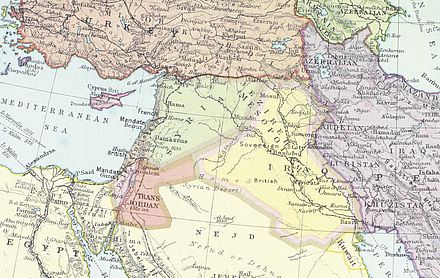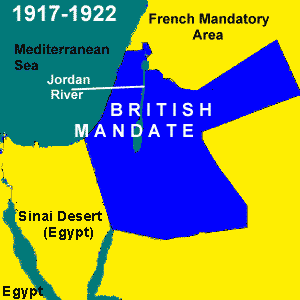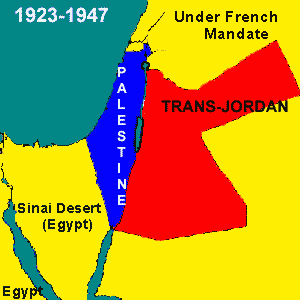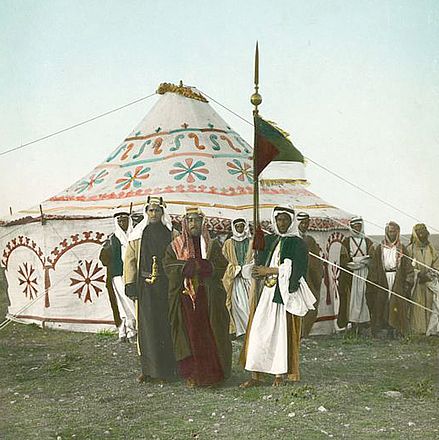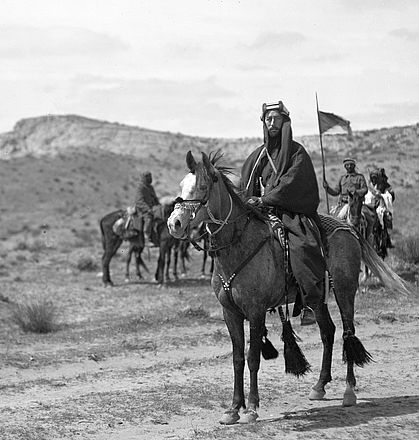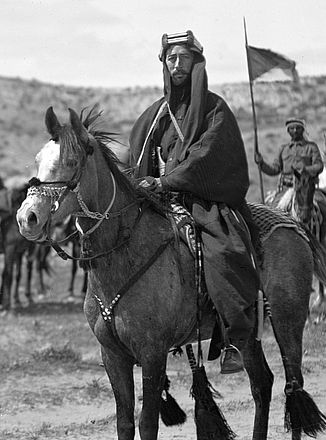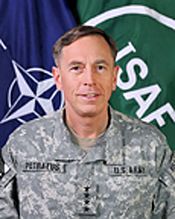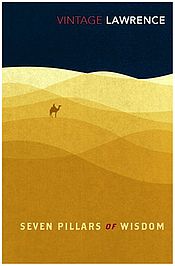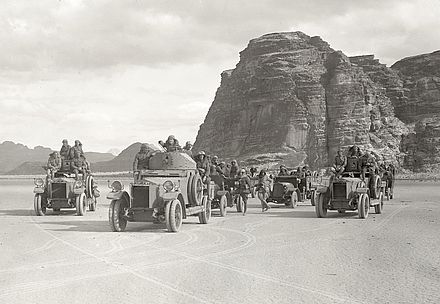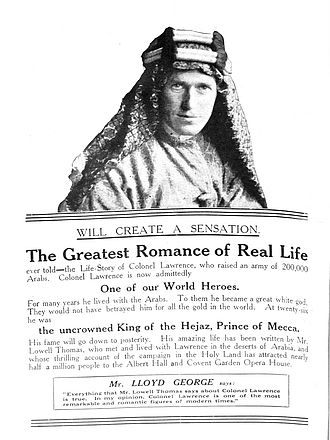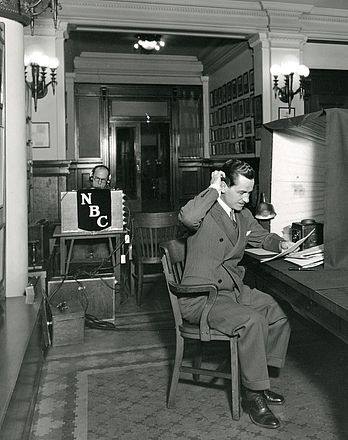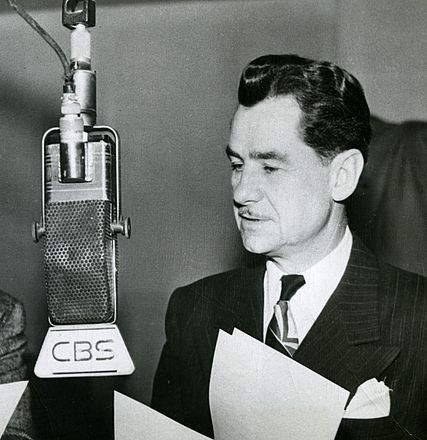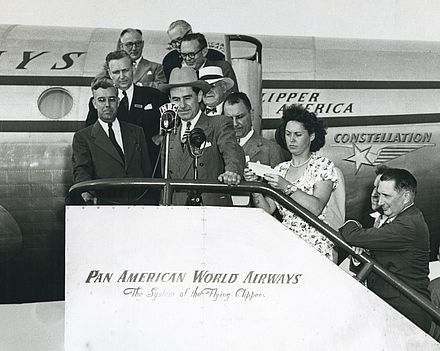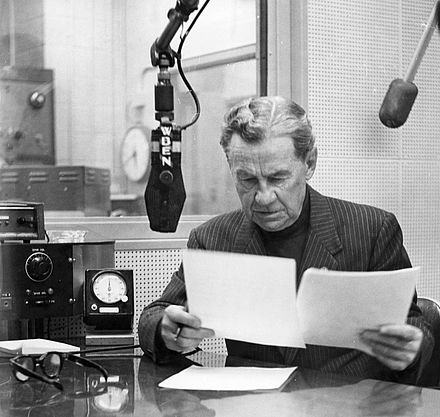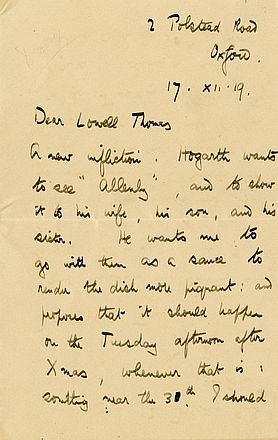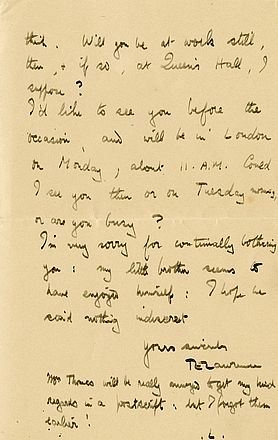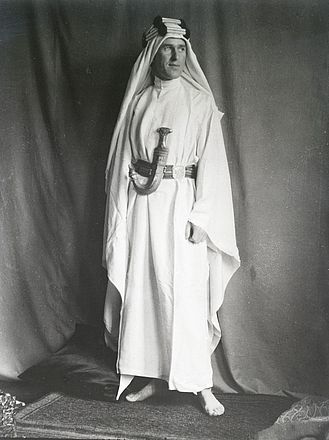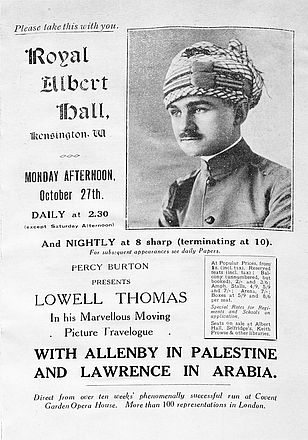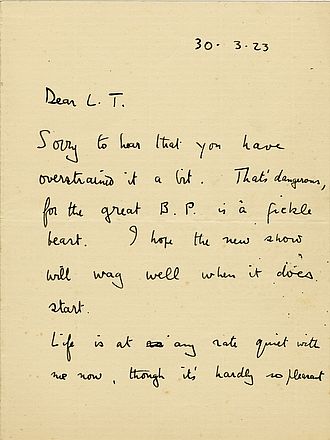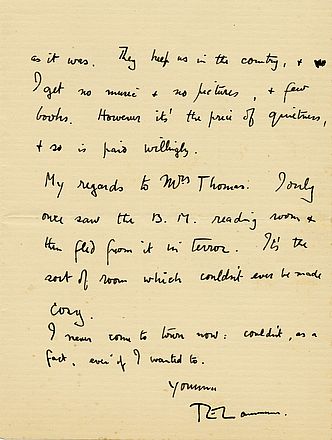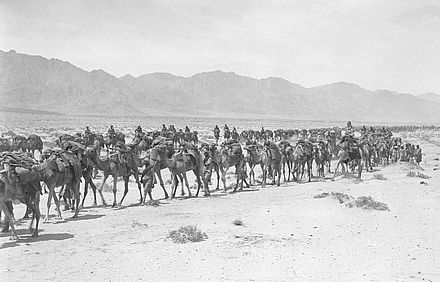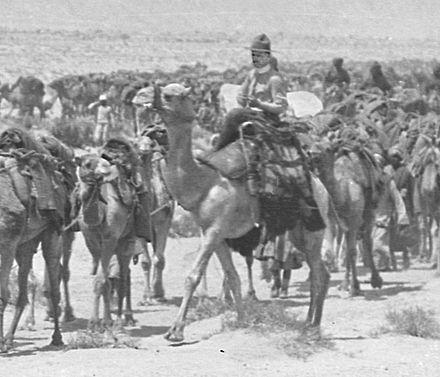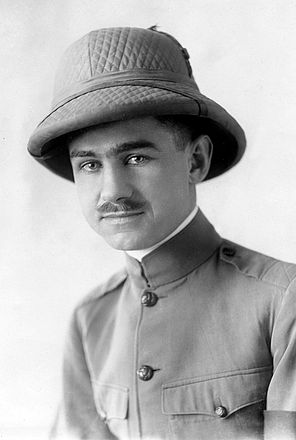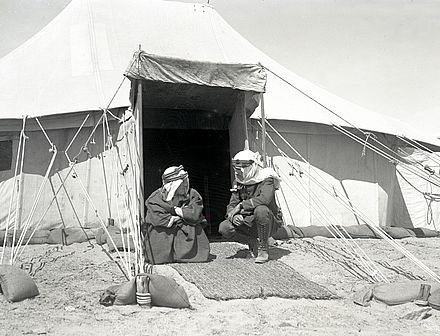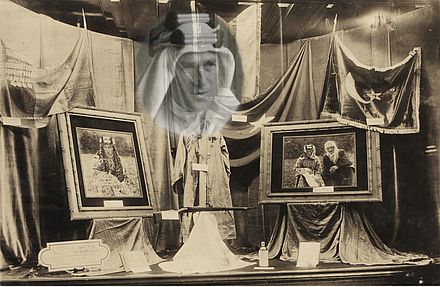T.E. Lawrence and Lowell Thomas helped create significant aspects of our world.
Lawrence’s legacy in the Middle East survives in ways both large and small. His imprint can still be seen upon the map of the region, which continues to follow the main borders drawn up at the Cairo Conference of 1921— the conference that was controlled, in large part, by Winston Churchill and T.E. Lawrence. “I take most of the credit of Mr. Churchill’s pacification of the Middle East upon myself,” Lawrence later wrote, in one of his less discouraged and less modest moods. “I had the knowledge and the plan. He had the imagination and the courage to adopt it and the knowledge of the political procedure to put it into operation.”
Under this plan approved at the Cairo Conference, Palestine was divided in half, with an eye toward a possible future Jewish state in the British-ruled half. (The British had promised a Jewish homeland in the Balfour Declaration in 1917.) Alas, this strategy, whatever its merits, has led to something other than “pacification.” Under this plan a new country called Iraq was created out of Shiite, Sunni and Kurdish territories — an arrangement no more stable today than it was then, an arrangement that also has failed to further “pacification.”
Under this plan Iraq and Transjordan were connected to each other by a corridor — as is still apparent on any map of the area. That connection was important because the Cairo Conference bestowed upon the Hashemites, the Arab clan with whom the British and Lawrence partnered during the First World War, control of both Transjordan and Iraq. Lawrence’s comrade Prince Feisal was made king of Iraq, and Prince Abdullah, Feisal’s brother, was made king of Transjordan. In 2010 the current king of what is now called Jordan, also named Abdullah, is his great-grandson. The borders of Jordan remain the same — minus the West Bank of the Jordan River, which was lost to Israel during the 1967 War.
Iraq has also kept its borders, but it is no longer ruled by the Hashemites. Feisal’s grandson, King Feisal II, was deposed in 1958. The Ba’ath Party took over in 1963; Saddam Hussein gained control of the party and the country in 1979. Still, from the first King Feisal in Iraq, Lawrence’s friend, to Saddam Hussein, the Sunni minority — not the Kurds, not the Shiite majority — ruled the country. After the United States and its allies invaded and defeated Iraq in 2003 and tried to establish a democracy, continued tensions among the different ethnic groups brought together under the plan approved in Cairo in 1921 have contributed to the violence that still wracks the country.
In attempting to understand the nature of the insurgency in Iraq, American General David Petraeus turned to T.E. Lawrence for help. General Petraeus studied Lawrence’s writings (PDF, 173Kb), borrowed from them in fashioning his own anti-insurgency strategies and required his top officers to read them. So Lawrence has a legacy, too — a long-lived legacy — as an expert on military strategy in the Middle East.
Of course, the predominant area of instability in the Middle East in the past 60 years has been what was then called Palestine. Despite his historical knowledge and personal familiarity with the area, Lawrence’s abilities as a prognosticator were limited. He wrote that the heart of the Middle East was “weak in material resources,” failing to anticipate the great importance for the region of one particular black, liquid material resource. He never understood the strength of Ibn Saud or foresaw the Kingdom of Saudi Arabia. And Lawrence certainly did not foresee what was going to happen in Palestine. According to Chaim Weizmann, the first president of Israel, Lawrence was optimistic “that the Jews would be of great help to the Arabs, and that the Arab world stood to gain much from a Jewish Homeland in Palestine.” Indeed, Lawrence predicted in Cairo in 1921 that “in four or five years under the influence of a just policy, [Arab] opposition to Zionism would have decreased, if it had not entirely disappeared.” If the plan promoted by Lawrence and Churchill was designed to help accomplish that, it failed. Their plan left a conflict that has helped destabilize the area and the world for the better part of a century.
In making T.E. Lawrence into a hero through his multimedia show, Lowell Thomas helped give Lawrence the reputation and credibility needed to help redraw the boundaries and appoint some of the leaders of the Middle East. But Thomas’ legacy extends well beyond his contributions to Lawrence’s legacy.
Thomas worked in all the major news media of the twentieth century and was a pioneer and an innovator in two of the most important: radio and television. Broadcast journalism, of course, had many creators, but Lowell Thomas may have been as important as any of them. He introduced formats (the first nightly news program in the United States), standards (a refusal to read advertisements) and methods (particularly for broadcasting from remote locations). He experimented with technologies — from multimedia to audio to film to television. He changed financial arrangements — forming a group of local stations, Capital Cities, that eventually became powerful enough to purchase a network, ABC. He discovered new genres of success with what were then new media: radio, newsreels, television. And Thomas’ earliest journalistic triumph — the multimedia show on “Lawrence in Arabia” — also qualifies as a precursor in some ways to the multimedia forms that are proving so important in the twenty-first century.
Both Lawrence and Thomas played a part in the exploding celebrity culture of the past hundred years. Thomas gave Lawrence his outsized and inextinguishable celebrity. And Lawrence explored the conflicts, tensions and absurdities inherent in such celebrity with as much energy and angst as anyone. Lawrence would pose for pictures for Thomas’ show, then denounce Thomas and that show. He used his fame in letters to newspapers and campaigns within the government to manipulate policies. Indeed, he was an early experimenter in the new twentieth-century field of public relations. But few celebrities have run so far from their renown as Lawrence — who changed his name, who invented a whole new obscure life for himself, and who, with a masochistic intensity that is painful even to read about, often seemed to despise what he had become.
In this Thomas was Lawrence’s opposite. Not only did he play a major role in creating Lawrence’s fame, he did a splendid job of making himself famous — as one of the best known journalists in America for much of his lifetime — perhaps the best known for a decade or two of that lifetime. (Unlike romantic military fame, especially romantic military fame sustained by a grand movie, journalistic fame tends not to outlive the journalist’s lifetime.) Thomas — calm and self-satisfied where Lawrence was tormented and self-lacerating — was mostly untroubled by his own celebrity. In fact, he seemed rather to enjoy it. It probably helped that Thomas saw himself as the enthusiastic but nonpartisan reporter — indeed, he helped establish the type — not as a crusader. He was burdened by no great political cause, like Lawrence’s commitment to Arab self-governance, so he had no cause to worry about promoting or betraying.
Lawrence and Thomas left us with a final legacy. They show us how journalism — Thomas’ journalism in that amazing multimedia show — can create legends: the legend of “Lawrence of Arabia.” They show us how a man with great talents but also clumsy enough to shoot his own camel during the key battle in the taking of a small desert port, Akaba, can become a hero. They show us how the need for a hero after a horribly bloody and mostly pointless war gets satisfied, how a blond, blue-eyed Englishman ends up getting much of the credit for an Arab revolt mostly directed against, ironically, colonialism. They show us how the notion of the “other” as evil — first the Turks, maybe now the Arabs — resonates in Western culture. Thomas took his show to many of the major English-speaking cities in the world. In so doing, he helped keep various stereotypes alive in the English-speaking world’s psyche — stereotypes that live on. Thomas and Lawrence show us, in other words, how a legend, conjured up by a journalist, can contribute to reinforcing stereotypes, to redrawing maps, to anointing kings and cobbling together countries, to changing politics — to creating history.


